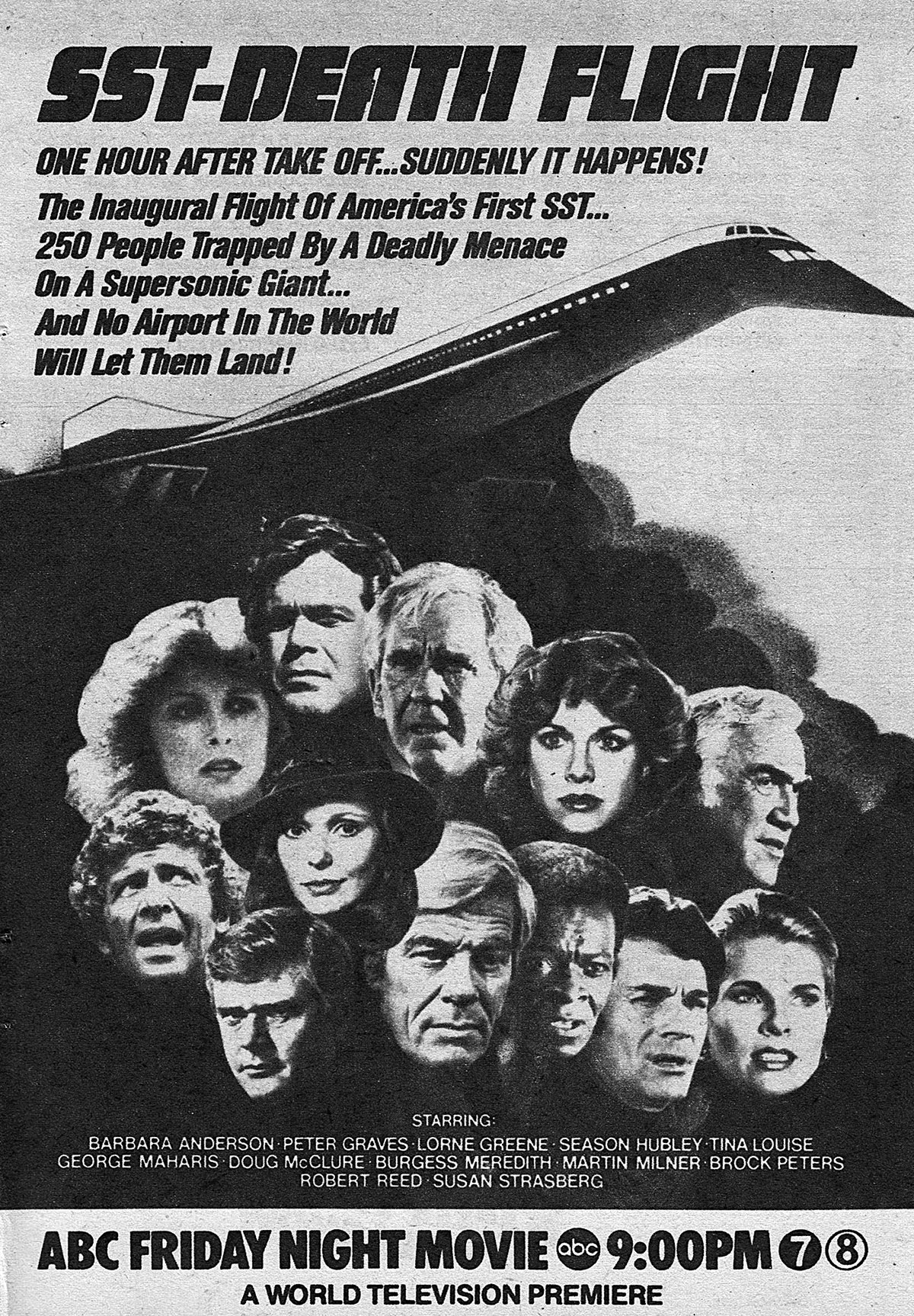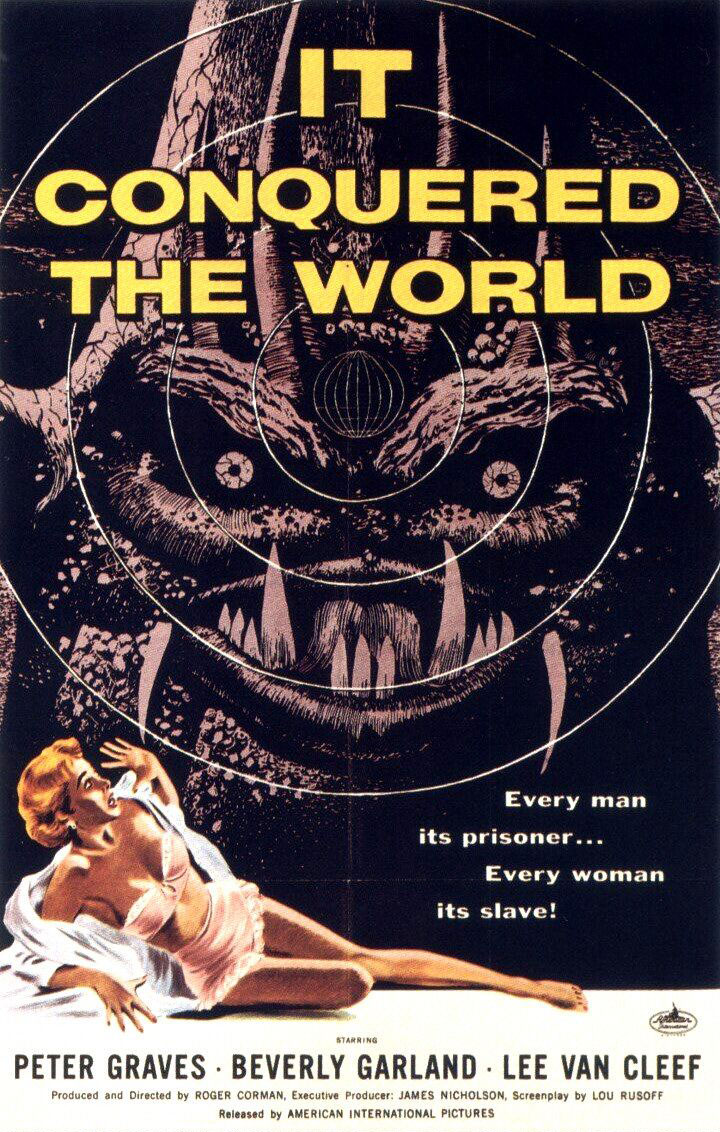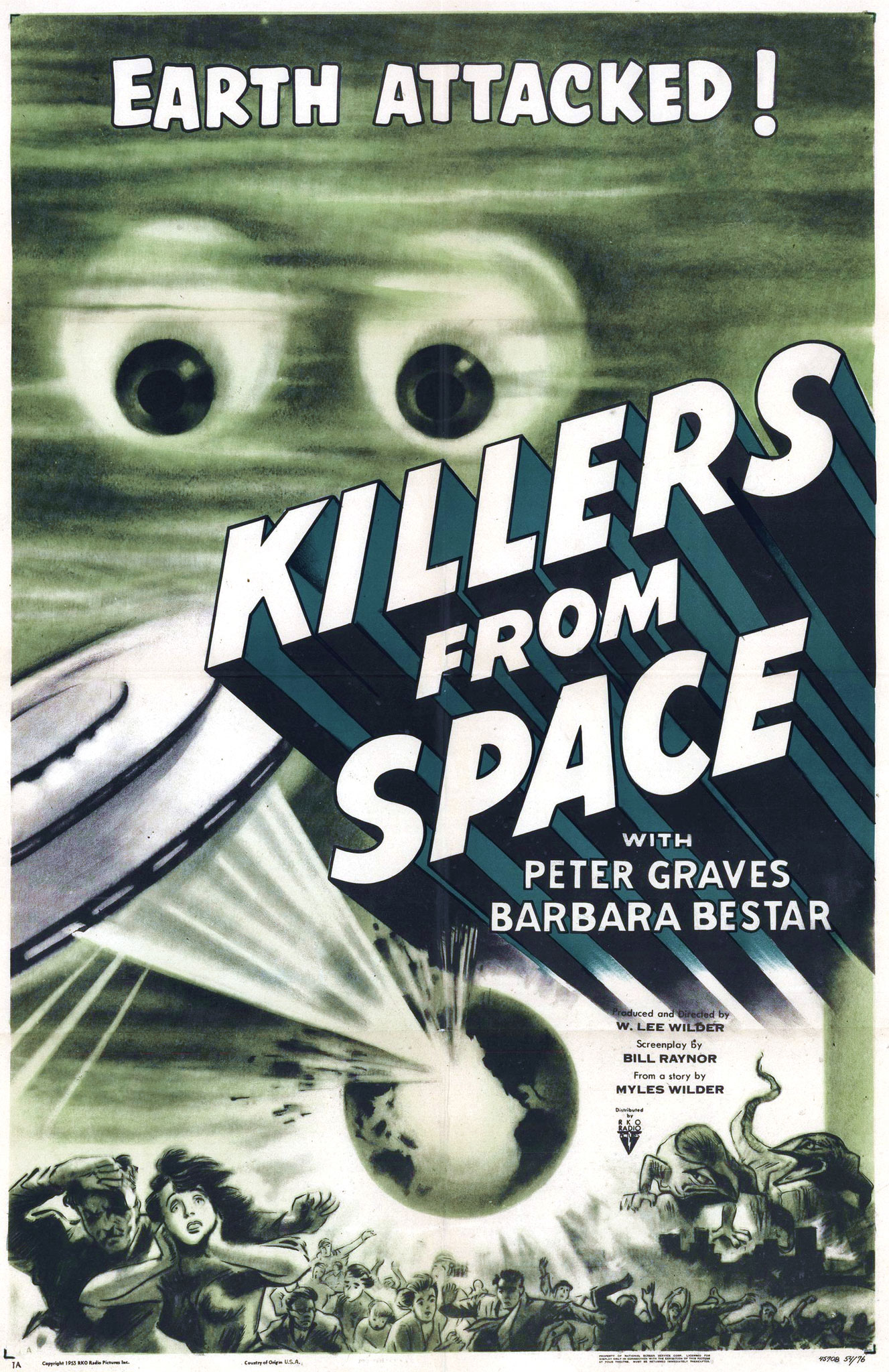 This is exactly the kind of cheese I look for from a television movie in the days before prestige TV. Cheap production values, a bad script, and an ‘all-star’ cast slumming it for an easy paycheck. Also, it helps to rip off a popular cinematic film series — in this case, the Airport franchise.
This is exactly the kind of cheese I look for from a television movie in the days before prestige TV. Cheap production values, a bad script, and an ‘all-star’ cast slumming it for an easy paycheck. Also, it helps to rip off a popular cinematic film series — in this case, the Airport franchise.
It was something of a minor industrial embarrassment for the United States that the only supersonic transport (SST) planes ever in passenger service were run by France and the UK. In this film’s fictional universe, that oversight has been rectified, in the form of the Cutlass Aircraft Maiden 1, an SST whose special effects miniature looks to have been cobbled together from two or three different Revell model kits (the effects in this flick are bad, bad, bad).
After a final shakedown flight, it is time to take passengers onboard, for a trip from New York to Paris that will only take a little over two hours. It’s a big day for Cutlass, as future purchase orders for the plane hinge on its performance during this flight. As such, Cutlass has entrusted the plane to a very serious pilot, in Captain Jim Walsh (a post-Brady Bunch Robert Reed, still rocking the perm). Continue reading “SST: Death Flight, aka Death Flight”

 Roger Corman was a better director than Bert I. Gordon. That’s obvious, of course. Roger Corman is a Hollywood legend, while Gordon is known only to us poor souls who like trash cinema. Corman’s reputation has been burnished by all the successful filmmakers that came through his stable, but he could trash it up with the worst of them. I mention Corman and Gordon in the same breath because today’s It Came from the 1950s entry is almost indistinguishable from the crap Gordon used to turn out. The only major difference is that Corman knew how to end a scene before things got too boring.
Roger Corman was a better director than Bert I. Gordon. That’s obvious, of course. Roger Corman is a Hollywood legend, while Gordon is known only to us poor souls who like trash cinema. Corman’s reputation has been burnished by all the successful filmmakers that came through his stable, but he could trash it up with the worst of them. I mention Corman and Gordon in the same breath because today’s It Came from the 1950s entry is almost indistinguishable from the crap Gordon used to turn out. The only major difference is that Corman knew how to end a scene before things got too boring. There’s something that must be gotten out of the way before getting to the review proper. This film features an early scene with an Air Force jet flying around. Its call sign is “Tar Baby 2.” Yep. Tar baby is one of those terms that the people who use it insist is not racist. But, come on. It’s a very evocative term. I bet it was evocative in 1954, when this film was released, as well. Whatever the context and whatever the time, hearing it will make a modern viewer’s head turn, and is yet another surprise look into grandpa’s casual bigotry that these old flicks provide. Anyway…
There’s something that must be gotten out of the way before getting to the review proper. This film features an early scene with an Air Force jet flying around. Its call sign is “Tar Baby 2.” Yep. Tar baby is one of those terms that the people who use it insist is not racist. But, come on. It’s a very evocative term. I bet it was evocative in 1954, when this film was released, as well. Whatever the context and whatever the time, hearing it will make a modern viewer’s head turn, and is yet another surprise look into grandpa’s casual bigotry that these old flicks provide. Anyway…